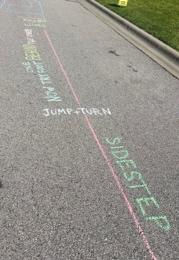Building Communication with Your Child
- All Care Therapies

- Jan 18, 2023
- 2 min read

Observe your child. Watching helps us recognize a child’s feelings and needs. Observe their focus of attention, facial expressions and body language. Be aware of their alertness level, breathing rate, duration of sounds and pitch and volume of their voice. Observing gives us the information we need to interpret and understand their feelings and interests.
Wait. Waiting gives your child the time they need to express themself in their own way. Our natural tendency as adults is to ask questions and to teach which often leads to us talking the whole time and answering for our children. Waiting for our child to speak gives them time to express their needs, interests and feelings.
Listen. Listening encourages your child to express themself. It gives us an opportunity to understand them better and to be able to respond more sensitively to them. It also helps your child feel recognized and gives security and encouragement to continue to communicate. We can show a child we are listening by imitating, interpreting and commenting. Repeating what they say if we don’t understand can sometimes help us figure out what they are saying. Interpreting what they are saying and repeating it back gives them a correct model and shows we’re interested in what they have to say. Commenting on what they are saying also shows we are listening and engaged in the conversation.
Adapt. Being face to face when communicating and playing helps us to observe our child better and lets our child know we’re interested in them and what they are doing. It also encourages the back and forth of conversation.
Add Language. Expanding what your child says will help them learn and use more language. You can add gestures and facial expressions when speaking with young children. Other ways to expand language include adding one more word to what your child says, stressing key words, and repeating the same word or phrases in games and routines.
Allow. Letting our child take the lead in play helps us to see what they are interested in and lets them know we are interested in them. It shows us what interests our child and then we can add language to help them talk about it.
References:
American Speech-Hearing-Language Association (ASHA), www.asha.org
Manolson, Ayala. It Takes Two to Talk, Hanen Early Language Program, 1992.




Comments